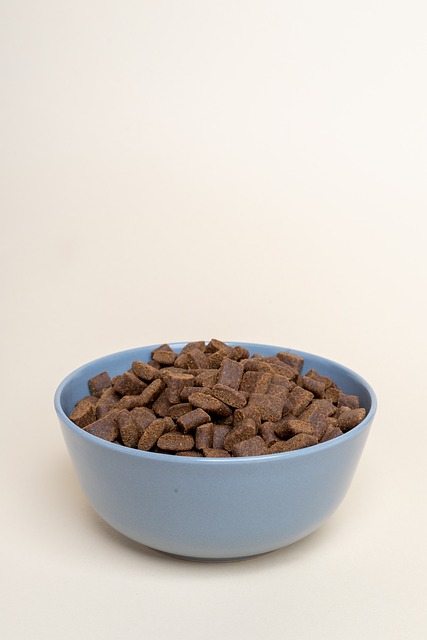Cat Food: Wet vs Dry and Eating Habits
Choosing the right cat food affects a cat’s daily energy, hydration, and long-term health. Owners often weigh wet food against dry food, consider life stage and medical needs, and adapt feeding routines to a cat’s natural eating behavior. This article explains types of cat food, compares wet and dry options, and gives practical guidance on portioning and transitions to help you make informed choices for your cat’s diet.

What should a cat eat?
Cats are obligate carnivores, which means their diet needs high-quality animal protein and certain nutrients that come mainly from meat. A complete commercial cat food lists a statement of nutritional adequacy and meets recognized guidelines for life stage (kitten, adult, senior). Look for named protein sources (chicken, turkey, fish) near the top of the ingredient list and appropriate levels of taurine, arachidonic acid, and vitamin A. Treats and table scraps should be limited to avoid unbalanced nutrition or digestive upset. For cats with medical conditions, a veterinarian can recommend therapeutic diets tailored to kidney disease, obesity, allergies, or other issues.
Understanding cat food types
Cat food comes in several forms: wet (canned or pouched), dry (kibble), semi-moist, and raw/home-prepared. Each form has advantages and drawbacks related to nutrition, storage, dental effects, and convenience. Many commercial foods are formulated to provide a complete balance of proteins, fats, vitamins, and minerals; check the label for an AAFCO or equivalent statement indicating the food is complete and balanced. When evaluating food, consider guaranteed analysis (protein, fat, fiber), ingredient quality, and life-stage suitability. Rotation between brands or formulations can expose cats to varied nutrients, but transitions should be gradual to avoid gastrointestinal upset.
Wet food: benefits and considerations
Wet food typically contains 70–80% moisture, which helps maintain hydration — particularly important for cats that drink little water. Higher moisture can support urinary tract health and is often recommended for cats prone to urinary crystals or kidney issues. Wet formulas usually have fewer carbohydrates and higher animal-protein content compared with many dry kibbles, aligning with feline nutritional needs. The main considerations are storage and cost: opened wet food requires refrigeration and is usually more expensive per calorie. Some cats prefer the texture and flavor of wet food, and mixing wet and dry can help encourage eating in picky cats or those with dental limitations.
Dry food: benefits and considerations
Dry food is calorie-dense, shelf-stable, and convenient for free-feeding or scheduled meals. The lower moisture content makes dry food less helpful for hydration, so ensure fresh water is available at all times. Kibble varieties often contain carbohydrates and plant-based ingredients that make them more economical, but ingredient quality varies widely by brand. Some formulations include dental-friendly kibble shapes or coatings intended to reduce tartar build-up, though brushing remains the most effective dental care. Dry food portion sizes should be monitored to prevent overeating; many cat owners measure servings and adjust based on body condition and activity level.
Eating routines and portion control
Cats evolved to take many small meals; indoor cats in particular may need portions spread throughout the day. Establish a routine with scheduled feedings or controlled free-feeding based on your cat’s tendency to graze. Use the feeding guidelines on the food label as a starting point, then adjust by monitoring body condition score rather than relying only on weight. For weight management, measure food, reduce calorie-dense treats, and increase play and activity. If you need to change your cat’s food, transition gradually over 7–10 days by mixing increasing amounts of the new food with the old to minimize digestive upset and rejection due to texture or flavor differences.
Practical tips for choosing and switching food
When selecting cat food in your area or from local services, prioritize complete and balanced formulas appropriate for your cat’s life stage and health. Read labels for protein sources and guaranteed analysis, and consider brand reputation and manufacturing transparency. If your cat has allergies or intolerances, an elimination trial or limited-ingredient diet under a veterinarian’s guidance can help identify triggers. Store dry food in a cool, dry place and keep wet food refrigerated after opening. Maintain consistent feeding spots and monitor your cat’s eating habits — reduced appetite, increased thirst, or sudden changes in weight or stool quality warrant advice from a veterinarian. For pet-specific nutritional guidance or medical concerns, consult your veterinarian.
Conclusion
Selecting cat food involves balancing nutritional needs, convenience, and your cat’s preferences. Wet food supports hydration and often aligns closely with feline protein needs, while dry food offers convenience and shelf stability. Observe your cat’s body condition and eating behaviors, consult a veterinarian for health-related diet changes, and make gradual transitions when switching foods to support digestive comfort and ongoing well-being.






